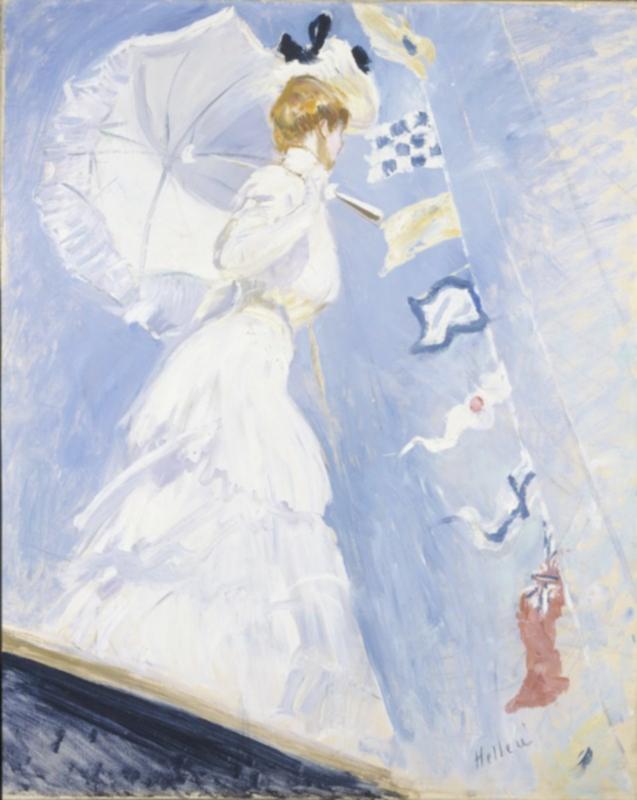Description:
Paul Helleu (1859-1927) was a French painter and graphic artist, a student of Gérôme at the Paris École des Beaux-Arts. He combined the academic education he had obtained there with the experiences of his colleagues and friends, including C. Monet, J.S. Sargent, J. McNeill Whistler, G. Boldini, J.J. Tissot, and J.-E. Blanche represented in the Rogalinski Gallery. Thanks to their help and partly to their influence, he became one of the most highly regarded portraitists of the Belle Époque and a master of the graphic technique of dry point. His favorite model was his wife Alice Guérin, whom he met in his studio in 1884. His acquaintance with the poet, collector and famous Parisian dandy Count Robert de Montesquiou introduced Helleu to the aristocratic and literary salons of Paris, where he became friends with Marcel Proust, who portrayed him as the painter Elstir in his masterpiece “In Search of Lost Time”. At the end of the 19th century, Helleu turned to plein air studies, which took him to the charming and fashionable Norman resort and yachting port of Deauville, also immortalized in Proust’s work. From then on, the place became a frequent motif of Helleu’s paintings, either in the form of views of the port and life taking place there, or in portrait shots of his wife on one of their four yachts. One such work is the painting “At the Regatta” from around 1900. Perhaps it was purchased by Edward Alexander Raczynski directly from the artist. We know that the creator of the Rogalinski Gallery posed for the artist in a portrait, which together with three pencil studies of women by him disappeared during the war. The preserved work is an oil painting on canvas with dimensions of 80 x 60.5 cm, which can be found in the first room of the Gallery.
Description of the painting:
In full sunlight, against a blue sky, a young and slender woman with golden-red hair appears to us, allowing us to recognize her as the painter’s wife. She is dressed in a long white dress with a strongly emphasized waist, long sleeves and a high collar. Her elegant figure is completed by a white hat with a navy blue bow and a white parasol that she rests on her right shoulder. Staring into the distance, she stands on a navy blue base, which is a fragment of the yacht’s hull with a wooden rub rail. We see Alice’s profile from the bottom and in profile, and her head turned away from us in three quarters from behind. To the right of the model in the picture field, the international flag code is opened, suspended obliquely under two shrouds, i.e. ropes supporting the mast from the bow. The flags of the international signal code indicate the moment of the end of the regatta, perhaps organized as part of the II Summer Olympics in Paris in 1900, when sailing became an official Olympic discipline.
The observed scene creates a thoughtful composition composed of a series of complementary and balanced triangles. The largest one includes the main heroine with the flag, the smaller one her silhouette and the fragments forming it, further the cut-outs of the parasol seen from below, or the triangle of the hull inserted into the corner of the painting. This is accompanied by a thoughtful color scheme based on white, blue, navy, yellow, sand beige and red, i.e. colors that have long been associated with summer, sea, beaches and sport sailing. How important this color scheme was for the painter is evidenced not only by the departure from the ceremonial arrangement of the flags, but also by the inclusion of the civil British flag, which should not appear here.
The snapshot, interestingly framed view of this scene, bright palette, but also divisionist technique relying on pure patches of color, shaped by the sun and color-based neighborhood, indicate the assimilation of the impressionistic achievements worked out by Paul Helleu’s older colleagues.


